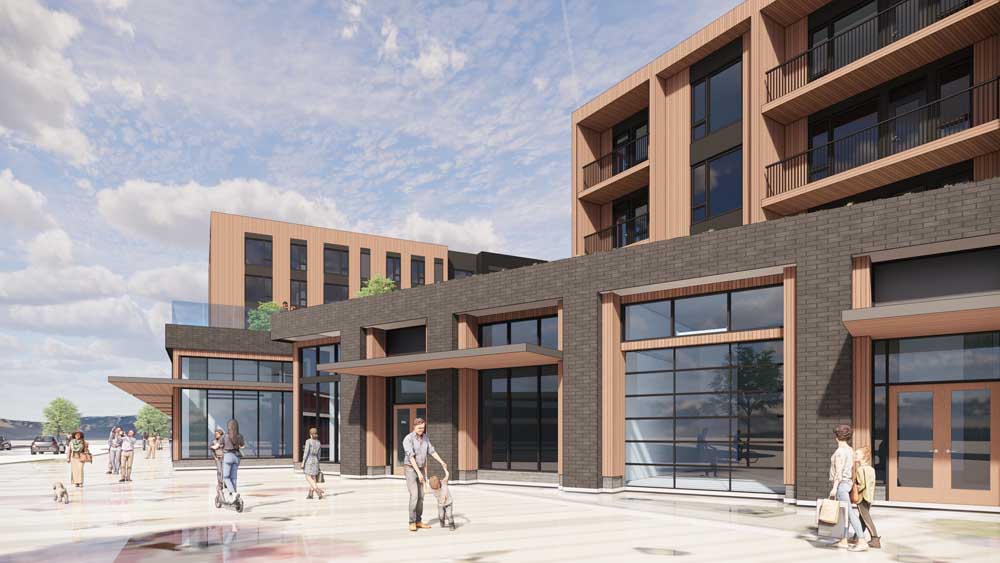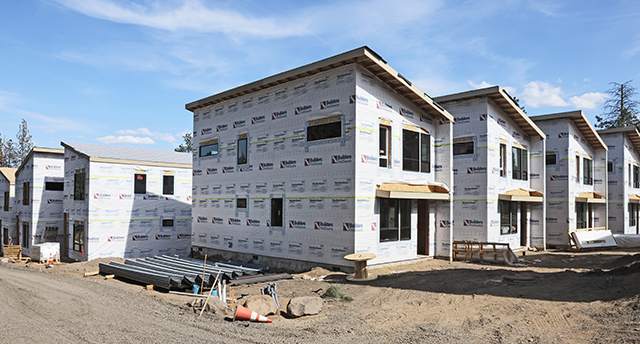Big Meadow at Black Butte Ranch
Published 12:00 am Monday, September 1, 2014

- Andy Tullis / The BulletinA golfer tees off on No. 10 at the Big Meadow course at Black Butte Ranch while his playing partner watches.
BLACK BUTTE RANCH —
The back nine at Big Meadow — Black Butte Ranch’s original golf course, built in 1972 — always offers the same greeting.
From the tee box of the par-5 10th hole, unobstructed views of North Sister serve as a backdrop for a fairway that turns right and disappears behind aspens and ponderosa pines. Off in the distance is a fairway bunker eager to doom the ball of an overly aggressive golfer.
The scene requires a momentary pause to take it all in.
“I am glad I came out today,” Eric, my friend and playing partner, said on a clear, warm and breezy afternoon last week. “I forgot how beautiful it is out here.”
The 535-yard, dogleg-right 10th hole features all the characteristics that have made Big Meadow a must-play golf course in Central Oregon for more than 40 years, when Robert Muir Graves’ design about 8 miles northwest of Sisters first opened to the public.
Like the 10th, the entire course is in a gorgeous setting that at times gives you the feeling that the surrounding mountain peaks are there to watch over your golf game. In fact, No. 10 is just the beginning of a stretch of holes with views as breathtaking as you would find at any course in Central Oregon.
From a distance, the green on the par-4 11th hole almost appears as if it sits at the base of North Sisters. And jagged Three Fingered Jack towers over the 14th green, which itself is framed by aspens and pines, offering the signature view of the golf course from the 14th hole’s elevated tee box.
“Big Meadow has some beautiful settings,” said Jeff Fought, Black Butte Ranch’s longtime director of golf, adding that the unobstructed views are a result of the terrain, which “is so much flatter than Glaze Meadow (Black Butte Ranch’s second course).”
Of course, mountain views are only so appealing to a golfer. Big Meadow, which was revamped in 2007, has stood the test of time because it is also a joy to play.
Currently, some greens on the back nine are mending after lightning struck last month and destroyed some of the controllers and electronic boards used to operate the course’s irrigation system. Still, the irrigation is working again, and those greens are not in such bad shape that they detract from the overall experience.
Big Meadow’s design strikes a nice balance of being forgiving for novices yet challenging for lower handicaps — and being all things to all kinds of golfers is not an easy task.
One way that Big Meadow keeps better players in check is with the course’s 65 bunkers, many of them mounded and particularly difficult to escape. The fairway bunkers — which are present on the vast majority of holes — are often set at a distance that some golfers cannot reach with a driver. And while doglegs abound, few produce an awkward turn.
“Robert Muir Graves was a great designer,” Fought said of Graves, a Central Oregon resident who also designed The Greens at Redmond and Bend’s River’s Edge and Widgi Creek courses before his death in 2003. “I love his stuff, and he really put together a masterpiece (at Big Meadow).”
Of course, my respect for Graves did not stop me from cursing those bunkers. On my recent visit, I spent more time in sand than a 3-year-old at a day-care recess.
Repeatedly I hit either an errant drive or a sloppy approach shot that landed deep in one of those bunkers.
Perhaps out of frustration after finding my ball buried in a greenside bunker on the 349-yard, par-4 15th hole — the third consecutive hole in which I reached the sand — I muscled up a sand wedge and sent my ball flying over the green. I then muffed a chip, leading to a double bogey.
Walking off the green, my head shaking, I mumbled, “You’d think I would be better out of the sand.”
“Yeah, with as much as you’ve been in the sand,” Eric interrupted before letting me finish my thought.
We both laughed.
For the most part, Big Meadow’s bunkers are not meant to punish. But they do, apparently, punish bad golf.
Difficulty of course
The course is of average length, and six combinations of tees (ranging from 5,485 yards to 7,002 yards) give golfers ample choices. Heavy bunkering and some challenging green complexes are harder on a better player’s scorecard than it might first appear. But novices will find the course’s few water hazards freeing, especially considering the course is without a forced carry.
The fairways are spacious despite being lined with homes, ponderosa pines and aspens. But fairway bunkers are often present, and out-of-bounds markers are typically not far from the tree line for shots that stray too far from the mark.
Once in the fairway, golfers will have to play precise shots into the greens to avoid the deep bunkering around the greens. Save for the 12th and 13th greens, which both slope aggressively from back to front, the putting surfaces are generally roomy and predictable.
Favorite hole
I go back and forth on whether I prefer the par-5 10th hole or the par-4 14th, Big Meadow’s signature hole that perfectly frames Three Fingered Jack. Both holes feature exceptionally beautiful mountain views, but the 535-yard dogleg right (No. 10) gives aggressive golfers a real opportunity at an eagle.
The dead tree that once guarded the right corner of the fairway fell (naturally, Fought says) two years ago, which has taken away some of the risk of cutting the corner. Now a golfer can set up a manageable approach with a long iron into a treacherous green complex that is protected by two bunkers and is gorgeously framed by aspens.
But even without the tree there is still risk off the tee, as bombers can run their drive through the fairway and into a bunker or worse. Black Butte Ranch has plans to add some bunkering to protect the corner, in lieu of the tree, but regardless, the hole makes for quite a start to the engaging back nine.
How to approach the course
Where a golfer ends up off the tee will often dictate the score. The course’s heavy bunkering acts as a guide for low-handicap golfers to choose the best route to the hole, while punishing wild tee shots.
The varied distances at Big Meadow often allow for more conservative tee shots, and in many cases a 3-wood will take the fairway bunkers out of play. And mostly roomy greens take some of the risk away from playing a longer iron into a green.
Still, Big Meadow does present chances for longer hitters to make a run at birdie or better with four reachable par 5s. But be forewarned: Shots that stray into those fairway bunkers are not so easy to dig out.
Off the course
Finding a place to practice at Big Meadow should not be difficult. Big Meadow’s roomy driving range, which sits just across the entrance road from the clubhouse, is backed with a majestic view of Black Butte. And the short-game practice area, which includes practice bunkers, sits in a relatively secluded area on the far corner of the range.
Another short-game practice area is located just behind the ninth green. And Big Meadow’s practice putting green rests mere steps away from the first tee.
Big Meadow’s clubhouse includes a large pro shop and features a full bar and restaurant area called Robert’s Pub, which is named after course architect Robert Muir Graves.
Verdict
Big Meadow’s $77 peak rate is roughly on par with many of the other high-end, public-access golf courses in Central Oregon. And its $57 Deschutes County rate ($67 with cart), which is good during primetime on Mondays, Tuesdays and Wednesdays, is a bit more affordable.
Most who play the course will not be disappointed.
In the end, Big Meadow is an ideal course for golfers of varying skill levels to play together. And some of the most awe-inspiring mountain views anywhere can be found all along the way.
— Reporter: 541-617-7868, zhall@bendbulletin.com.







